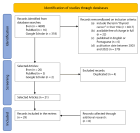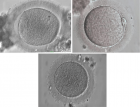Previous Issue (Volume - 8 | Issue - 2)
GS-MS Profile, Total Flavonoid and Phenolic Contents and Antioxidant Capacity of Leaves of Vitelleria paradoxa c.f. Gaertn
Published on: 1st May, 2024
Vitellaria paradoxa is an important medicinal plant that is used for the treatment of infections such as diarrhea, dysentery, helminthes, gastrointestinal tract, skin, and wounds. This research aims to determine other important uses of the plant leaves and quantify the phytochemicals present in the leaves. The plant leaves were extracted with two solvents (n-hexane and methanol). The phytochemicals were qualitatively and quantitatively analyzed using standard methods. The antioxidant activity was determined using DPPH. In the qualitative phytochemical screening of the methanol extract flavonoids, alkaloids, saponins, and tannins were identified as being present while steroids, anthraquinones, and glycosides were absent. All the screened secondary metabolites were absent in the n-hexane extract. In the GC-MS analysis of the methanol and n-hexane extracts seven compounds were obtained from the methanol extract while a total of twenty-four compounds were obtained from the n-hexane extract. The quantitative determination of the total flavonoid and phenolic contents showed that the leaves high content of flavonoids (91.00 mg quercetin equivalent/g extract) and phenolics (91.39 mg Gallic acid equivalent /g extract). These phytochemicals could be responsible for its high antioxidant activity (79.62%).
Assessment of Indigenous Knowledge on Using of Traditional Medicinal Plants to Cure Human Diseases in South Omo Zone Baka Dawla Ari District, Kure and Bitsmal South Ethiopia
Published on: 30th May, 2024
This ethnobotanical study aims to investigate and document the indigenous knowledge on using traditional medicinal plants to cure human diseases in southern Ethiopia, south Omo zone Baka dawla Ari district at Kure and Bitsmal community. In this study, 77 plant species that belong to 68 genera and 35 plant families were identified by 110 local community members and 10 traditional healers of the study area to treat 32 human diseases. According to the analyzed result of the study three families (Lamiaceae, Solanaceae, and Fabaceae) are equally leading families each with nine species (11.69%) followed by Euphorbiaceae with five species (6.5%) and Asteraceae with four species (5.2%) in the study area. The result of this study also shows that most of the traditional medicines were taken in the mouth (oral) at 61.5% followed by topical (26,4%) and inhalation form (12.1%). The findings of this study show that most traditional plants were collected from the forest (45.5%) followed by the backyard (26%) and herbs are the most popular (59%) followed by shrubs (27%) plant habits. According to the result of this study, leaves are the dominant traditional medicinal plant parts used (55%) followed by roots (11.2%). preference ranking of medicinal plants in the study shows Solanum incanum ranked first indicating that it was the most effective in curing stomach pain followed by Verbena officinalis and the highest informant consensus factor value (0.57) was recorded by Malaria, Evil eye, snake bite, sudden disease categories.
Agro-morphological Growth Response of Acha (FONIO) (Digitaria exilis and Digitaria iburua [Kippist] Stapf.) Exposed to Colchicine: Germination, Plant Height and Leaf Number
Published on: 30th May, 2024
Acha (Fonio) Digitaria sp. is a valuable cereal crop widely cultivated in several African countries. The genetic improvement of Acha through induced mutagenesis has gained attention for enhancing desirable traits. Colchicine, a mitotic inhibitor, is commonly used to induce polyploidy, which can lead to alterations in plant characteristics. This study aimed to investigate the effects of colchicine treatment on germination, plant height, and leaf count of two Acha species. Seeds from two Digitaria species, Digitaria exilis, and Digitaria iburua, were subjected to colchicine treatment using different concentrations (0.05, 0.10, 0.15, and 0.20g/dL). The control group was treated with distilled water. Germination rates were assessed by measuring the percentage of seeds that successfully sprouted. Plant height and leaf number were measured at maturity and analyzed using ANOVA on SPSS Version 26. The results indicated that colchicine treatment significantly affected germination, plant height, and leaf number in both Digitaria species. Germination rates varied depending on the concentration, with lower germination observed at higher concentrations (70.70% and 74.3% for 0.20g/dL treatment in both species). In terms of plant height, colchicine-treated Acha plants exhibited significant differences compared to the control group. The majority of treated plants showed increased growth (57.00 cm to 60.70 cm in D. exilis and 114.10 to 122.40 cm in D. iburua) compared to the control. Variability in plant height was observed among the treated plants, suggesting that colchicine-induced polyploidy had varying effects on height across different genotypes. Similarly, the number of leaves was affected by colchicine treatment. Treated plants exhibited an increase in leaf number (56.70 to 60.7 for D exilis and 32.60 to 36.30 for D. iburua), compared to the control group (49.7 and 29.7 respectively). This variability suggests that colchicine-induced polyploidy may have influenced leaf development and growth patterns in Acha. Colchicine treatment had significant effects on germination, plant height, and leaf count in both varieties of Acha. The results suggest that colchicine-induced polyploidy can alter these plant characteristics. These findings provide insights into the potential use of colchicine treatment for inducing desirable traits in Acha through polyploidization, which may have implications for crop improvement and breeding programs. Further research is warranted to explore the underlying mechanisms and assess the impact of these alterations on overall agronomic performance and yield potential.
Agro-morphological Growth Response of Acha (Fonio) (Digitaria Exilis and Digitaria Iburua [Kippist] Stapf.) Exposed to Colchicine: Leaf Length, Leaf Width and Leaf Area Index
Published on: 3rd June, 2024
The present study investigated the effects of colchicine treatment on leaf length, leaf width, and leaf area index (LAI) in two species of Acha (fonio), namely Digitaria exilis and Digitaria iburua. Colchicine, a potent mitotic inhibitor, has been widely used to induce polyploidy and in studying the effects of genome duplication on various morphological traits. This study aimed to explore if colchicine treatment could alter the leaf morphology of the two Acha species. Seeds of the two species were treated with colchicine solution at various concentrations (0.05, 0.10, 0.15, and 0.20 g/dL), while a control group was maintained without any treatment. Leaf length and width were measured using a meter rule, and LAI was calculated by multiplying the leaf length and leaf width with the constant for both species. Statistical analysis was performed using the Analysis of Variance on SPSS to determine significant differences between treated and control groups. The results showed that colchicine treatment had a significant effect on leaf morphology in both Acha species. Leaf length and width increased significantly in response to colchicine treatment, with the degree of increase depending on the concentration. Moreover, the LAI also exhibited a significant increase in treated plants compared to the control group. Colchicine concentration level of 0.10 g/dLproduced the best results that can be exploited to enhance the morphological characteristics of both Acha species. The findings suggest that colchicine-induced polyploidy can enhance leaf growth and overall leaf area in Acha plants, leading to potential implications for agricultural productivity and yield improvement. Further studies are needed to elucidate the underlying mechanisms and long-term effects of colchicine-induced polyploidy on other growth parameters, reproductive traits, and yield in Acha. Understanding the genetic and physiological changes associated with polyploidy in Acha species will contribute to the development of improved breeding strategies and cultivation practices for this important cereal crop.
Bees, Butterflies, and Beyond the Diverse Pollinators, an Essence for the Reproductive Success of Flowering Plants
Published on: 4th June, 2024
Pollinators are very critical when it comes to the reproductive success of plants. They promote outbreeding which holds immense significance in the era of global climate change. It allows the plants to become fertilized, to produce seeds, fruits, and eventually new plants. They are instrumental in the sustainability of our ecosystem. Thus, there is an essential need to study these pollinators to understand how, during the course of evolution, they have co-evolved with the flowering plants to shape floral architecture and community dynamics thriving in the vicinity. In this mini-view, we shall focus our discussion on some of the animal pollinators, the dwindling diversity of animal pollinators, and various associated pollination syndromes.
Wealth in Water: A Blueprint for Sustainable Global Ocean Research
Published on: 19th June, 2024
Pushing forward with leveraging water resources, promoting international cooperation, and ensuring transparency in deep-sea mining operations. There is also a concern about where to discharge the toxins of unpurified water. Artificial Intelligence has created a dominance in the applications field with a totally automated system.Out of a thorough analysis completed with indicators, satellite radar, and A Journals, there are 30 years of research and 8 years of monitored testing to achieve accuracy and relevance. The patents in place are, Oceanic Mining System (4446636), Flexible Solar Skin in Combination with an Airplane (4768738), Cargo Torpedo (4421050), Oceanic seaplow system (4398362), and previous articles like “Is Extracting Lithium and deep-sea mining more sustainable?”, “AI as a Means of Water Purification Protection”, “Global Water Distribution”, and “Can Deep Sea Water be Processed into Potable Water and Distributed into the Middle East’?To report some ballpark numbers on the proposal and how we would navigate these projects, there will be an exact location of where the plant will be built as well as a water/salinity report of the water being treated. There are still issues with analyzing the cost of desalination compared to other alternatives. Deep Sea Water proves to be a higher quality water and the investment is well worth it. The surveys lean toward clients preferring the International Standards Operating Procedure. All recipients agree there should be a sense of urgency on water shortages. Currently, AI has proven to be a vital asset in eliminating biases and expenses.
Efficacy of Sequential Applications of Pendimethalin 500 EC (Pendimight®) and Oxyfluofen 240 EC (Harris®) for Weed Control in Direct Seeded Onion (Allium cepa L.) in Sudan
Published on: 26th June, 2024
A field study was carried out to evaluate the efficacy of pendimethalin 500 EC (trade name: Pendimight®) and oxyfluorfen 240 EC (trade name: Harris®) to control weeds in direct-seeded onion (Allium cepa L.). Pendimethalin and oxyfluorfen were applied solely at reduced rates (1.35 and 0.17 kg a.i. ha-1), and at the recommended rates (1.8 and 0.25 kg a.i. ha-1) as pre-and post-emergence herbicides, respectively. Both herbicides were also applied sequentially at the same doses. Ten weeks after sowing (WAS), the application of pendimethalin alone provided better weed control (62% - 65%) than oxyfluorfen alone (33% - 43%) when they were applied at the lower and recommended rates, respectively. Sequential applications of the two herbicides as pre-and post-emergence herbicides, outperformed applications of the two herbicides alone, and resulted in the best weed control (79% to 85%), lowest weed dry weight (18.35 to 35.60 g.m-2), significantly increased plant height and the number of leaves per plant, and resulted in a ten-fold higher onion yield (24.64 to 26.37 t. ha-1) compared with the Un-weeded control (2.27 t. ha-1). There were no significant differences observed between the treatments on the emergence (%) of onion seeds and the survival of onion seedlings. Sequential applications of pendimethalin and oxyfluorfen is a promising techniques for weed control in direct-seeded onions in Sudan.
Phytochemical Compounds and the Antifungal Activity of Centaurium pulchellum Ethanol Extracts in Iraq
Published on: 25th June, 2024
The current study included a variety of phytochemical substances that were extracted from Centaurium pulchellum and showed a wide range of medicinal properties from the plant's reproductive and vegetative parts against the pathogenic fungus Aspergillus flavus. The vegetative and reproductive components of Centaurium pulchellum were subjected to (GC-MS) analysis for phytochemical study. The data indicated that fungal activity was the highest. Four extract concentrations of 5, 10, 15, and 20 mg/ml were utilized in the investigation, and the diameter of the colonies measured at each concentration was 90.00, 36.00, 28.00, 18.00, and 0.00 mm, respectively.Nine bioactive phytochemical compounds were found in Centaurium pulchellum's vegetative and reproductive portions, according to GC-MS analysis of the chemicals. Another study reported phytochemical substances that: 1-H-Imidazole-2-carboxaldehyde, 1-methyl-;Acetaminophen; n-Hexadecanoic acid; Mercaptoacetic acid, 2TMS derivative; 1.2,3-Dimethyl-5-(trifluoromethyl)-1,4-benzenediol #; Mercaptoethanol, 2TMS derivative-; Bis-(3,5,5-trimethylhexyl) phthalate Tetrakis(trimethylsilyl) orthosilicate #;- 1.1-Isopropoxy-3,3,3-trimethyl-1-[(trimethylsilyl)oxy]disiloxanyl tris(trimethylsilyl) orthosilicate #.
The Use of Thioxopyrimidine Derivatives as New Regulators of Growth and Photosynthesis of Barley
Published on: 2nd July, 2024
New synthetic compounds - thioxopyrimidine derivatives as regulators of vegetative growth and photosynthesis of spring barley (Hordeum vulgare L.) variety Acordine were studied. The growth-regulatory effect of new synthetic compounds, thioxopyrimidine derivatives, used in a concentration of 10-6M, was compared with the growth-regulatory effect of a plant hormone auxin IAA (1H-indol-3-yl)acetic acid) or synthetic plant growth regulators, derivatives of sodium and potassium salts of 6-methyl-2-mercapto-4-hydroxypyrimidine (Methyur, Kamethur), N-oxide-2,6-dimethylpyridine (Ivin), used in a similar concentration of 10-6M. The conducted study showed the similarity of the growth-regulatory effects of synthetic compounds, thioxopyrimidine derivatives, the plant hormone auxin IAA, and synthetic plant growth regulators Methyur, Kamethur, and Ivin. Morphometric parameters (average length of shoots (mm), average length of roots (mm), and average biomass of 10 plants (g)) and biochemical parameters (content of photosynthetic pigments chlorophylls a, b, a+b and carotenoids (µg/ml)) of barley plants treated with the plant hormone auxin IAA or synthetic plant growth regulators Methyur, Kamethur, Ivin or thioxopyrimidine derivatives were increased after 4 weeks compared to control plants. The dependence of the growth-regulatory effect of synthetic compounds, thioxopyrimidine derivatives on their chemical structure was analyzed. The use of the synthetic plant growth regulators, derivatives of sodium salt of 6-methyl-2-mercapto-4-hydroxypyrimidine (Methyur), potassium salt of 6-methyl-2-mercapto-4-hydroxypyrimidine (Kamethur), N-oxide-2,6-dimethylpyridine (Ivin) and selected most active synthetic compounds, thioxopyrimidine derivatives for regulating the growth and photosynthesis of spring barley (Hordeum vulgare L.) variety Acordine is proposed.
Melaleuca Essential Oil (Melaleuca alternifolia cheel) in the Control of Beans Diseases
Published on: 12th July, 2024
Bean cultivation is vital to the global food and economy, especially in Brazil. Facing challenges from diseases that affect production, it is crucial to seek new strategies to maintain productivity and sustainability. Melaleuca alternifolia, known as the tea tree due to its medicinal properties, has little explored potential in controlling diseases in bean plants. The objective of this work was to evaluate the effectiveness of tea tree essential oil in controlling diseases in bean cultivation. In vitro tests were carried out to evaluate bacterial growth, at concentrations of (0.0%, 0.05%, 0.1%, 0.5%, 1% and 2%). And antibiogram with the bacteria Xanthomonas axonopodis pv. phaseoli, in different concentrations (0.0%, 0.05%, 0.1%, 0.5%, 1%, 2% and 3%). For the fungus Pseudocercospora griseola, sporulation tests were carried out, using direct and indirect methods, at concentrations of (0.0%, 0.05%, 0.1%, 0.5%, 1%, 2%, and 3%). Furthermore, for the fungus Colletotrichum lindemuthianum, mycelial growth tests were carried out with the same concentrations. The experiments took place in vivo, with a completely randomized statistical design, involving five replications per treatment and concentrations varying from (0.0%, 0.05%, 0.1%, 0.5%, 1% and 2%). Disease incidence was assessed using a diagrammatic scale, disease severity, Area under the Disease Progress Curve (AACPD) and Area under the Incidence Progress Curve (AACPI). Melaleuca Essential Oil (EO) inhibited the development of fungi and bacteria in in vitro tests starting at 0.5%. In vivo, Melaleuca Essential Oil (EO) showed a significant reduction in the incidence and severity of the disease from 0.5% in both fungi and bacteria. Melaleuca EO can be an effective alternative for disease control in bean cultivation.
Potential of Herbarium-based Phenological Studies to Predict the Climate Change Impacts
Published on: 24th July, 2024
Herbarium records provide a valuable historical database for assessing plant phenology shifts in the context of global climate change. The herbarium specimens, collected from diverse locations and periods, offer comprehensive data illustrating how many plants are altering their blooming times in response to global climate change. The appropriate use and analysis of long-term herbarium records offer an additional dimension for the study of plant phenology through the application of advanced experimental methodologies such as bioinformatics and satellite imagery, statistics, and Artificial Intelligence (AI) which, coupled with field observations, will improve ecosystems evaluation. These efforts can significantly contribute to conservation strategies and climate change mitigation and further support the synchronization of scientific inputs for evaluating the impacts of climate change and its ecological implications.
Agro-morphological Growth Response of Acha (FONIO) (Digitaria exilis and Digitaria iburua [kippist] Stapf.) Exposed to Colchicine: Number of Spikes, Spike Length, Number of Seeds per Spike and Grain Yield
Published on: 6th August, 2024
This study aimed to investigate the effects of colchicine treatment on the reproductive traits and grain yield of two species of Acha, Digitaria exilis and Digitaria iburua. Colchicine, a mitotic inhibitor, is known for inducing polyploidy and altering plant characteristics. The study focused on evaluating number of spikes, spike length, number of seeds per spike, and grain yield per hectare. The experiment was conducted in a randomized complete block design with three replications. The treatment groups included colchicine-treated plants at varying concentrations (0.05, 0.10, 0.15, and 0.20 g/dL) and control plants (untreated). The colchicine treatment involved the soaking of both Acha species in the colchicine solution for a period of 24 hours. While the control groups were soaked in distilled water. The results showed that colchicine treatment significantly affected the agronomic traits and grain yield of both Digitaria exilis and Digitaria iburua. Colchicine treatment led to an increase in the number of spikes (5.80 and 9.90 for D. exilis and D. iburua respectively), spike length (13.60 cm and 19.50 cm for D. exilis and D. iburua respectively), and number of seeds per spike (168.30 and 253.30 for D. exilis and D. iburua respectively), compared to the control group. Additionally, the grain yield per hectare was significantly higher (427.80gha-1 and 2126.70gha-1 for D. exilis and D. iburua respectively) in the colchicine-treated group. These findings suggest that colchicine treatment can effectively enhance the agronomic traits and grain yield of both Digitaria exilis and Digitaria iburua. The induced polyploidy through colchicine treatment likely contributed to the observed improvements in plant productivity. Further research is warranted to investigate the underlying mechanisms and to optimize the colchicine treatment protocol for Acha cultivation and improvement.

HSPI: We're glad you're here. Please click "create a new Query" if you are a new visitor to our website and need further information from us.
If you are already a member of our network and need to keep track of any developments regarding a question you have already submitted, click "take me to my Query."























































































































































